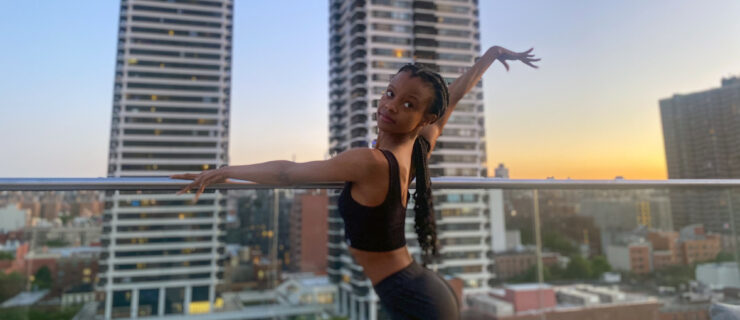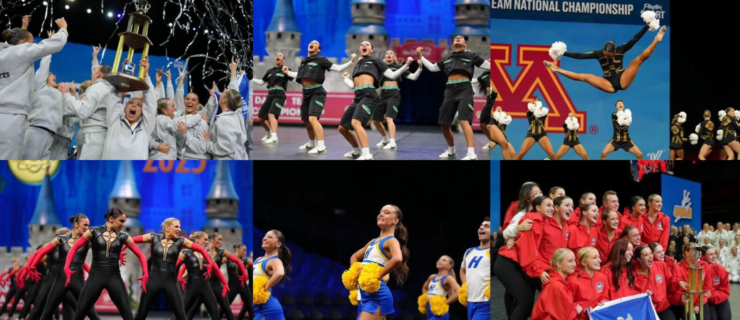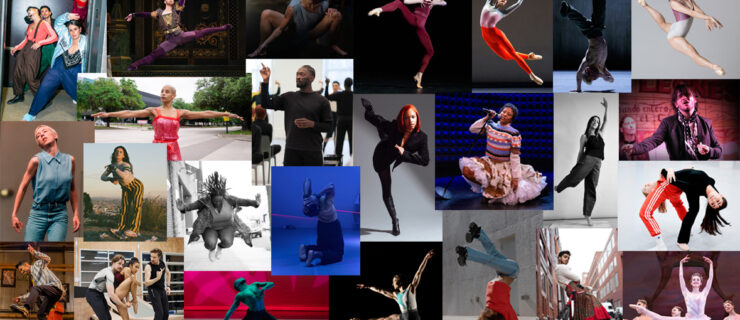Swop Debuts in the New Outkast Film
As the lyric goes, “It don’t mean a thing if it ain’t got that swing.� If that holds true,
Idlewild is sure to mean a lot of things to a lot of people. Set in a 1930s-era Southern speakeasy, the film has all the makings of a mega-musical: all-star cameos, sizzling new music by OutKast, daring dance numbers and, if all goes to plan, the creation of a brand-new dance genre named “swop.� Call it lindy hip-hop or jitterbug jumpin’—just don’t call it conventional.
Populating Idlewild
OutKast members André Benjamin (aka André 3000) and Antwan A. Patton (aka Big Boi) are known for their unique brand of rap and envelope-pushing music videos. Hoping to capture the same lightning in a bottle for Idlewild, the musical duo enlisted director Bryan Barber, with whom they’d collaborated on videos for “Hey Ya!â€� and “The Way You Move.â€� Â
Â
With a director in place, Hinton Battle (who has three Tony awards and a slew of stage and film credits under his belt) was chosen to choreograph. “Although the film is a [1930s] period piece, they didn’t want it to be an antique piece,� says Battle. “I was brought in to create a mixture of then and now.�
Â
Set at a Prohibition-era speakeasy simply named “Church,� the film’s plot centers on the lives and struggles of a shy piano player (Benjamin) and the club’s flamboyant manager (Patton).
Â
In marrying the past and the present, Battle set to work creating a hybrid of swing dance and hip hop, which he affectionately termed “swop.� Though more than 100 dancers (including the Broadway star Ben Vereen) ultimately participated in the film, all had to display versatility to survive the audition process. In the end, swing dancers, b-boys and b-girls, hip-hop freestylers, tumblers, and even circus performers were hired.
Â
“The audition process was very, very long and extremely challenging,� says dancer Henry “Chopper� Platt. “I’d never been exposed to swing dance, but my ability to freestyle was what got me a second look [from Battle].�
Southern Discomfort
To perfect Battle’s choreography, the dancers converged on location in Wilmington, NC, for several weeks of rehearsals before filming began. Faced with learning movements outside their respective comfort zones, many were apprehensive. Â
Â
“The dancers were freaked out by swop,� Battle says, laughing. “Three of them were ready to quit right off the bat. I reminded them that no one was hired to come in and do their specialty; they were hired to come in, dance and make it cool. And that’s what they eventually did.�
Â
According to dancer Ivan “Flipz� Velez, the dancers’ implicit trust in Battle was what made this obstacle possible to overcome. Velez, a prominent b-boy in L.A., had been featured in a “Forever Swing� tour of North America, and was one of the few dancers who felt comfortable with both genres. “If we hadn’t believed in [Battle’s] vision, it would’ve been hard to make it come to life,� says Velez. “He didn’t want us to take it lightly that we were doing something new and unprecedented.�
Â
To make the swop choreography work, cooperation was key. During rehearsals, the swing contingent worked closely with the hip-hop dancers to teach partnering and lifts, while the hip hoppers imparted the sharp urban style of their genre. “We all had our doubts, but it finally came together in some weird way,â€� says Velez.   Â
Â
Adding to the numerous dance and movement challenges was the constant addition of new music. The dancers were exposed to exclusive, classified mixes of OutKast’s music for the film, but the choreography was also ever evolving, as new drum beats and horns were added. “Hinton loved to throw fireworks and flares and exclamation points into the numbers,� says Velez. “Every day was a new adventure.�
Â
Mixing It Up
Because Battle felt strongly that each musical number should stand on its own, swop was far from the only dance genre to take the spotlight. Modern, jazz and tap also have a place in Idlewild. “You can’t do a [1930s] period piece without having tap in it,� says Battle, who enlisted established tap stars like Jason Samuels Smith and Chloe Arnold for the project. According to Battle, the tap scenes were conceived as homage to tap greats such as Charles “Honi� Coles and the Nicholas brothers.
Â
To realize OutKast’s vision of a musical film different than any other, Battle encouraged the dancers to dip into their bag of tricks. Though Karen Dyer was hired as a swing dancer, her unique skills took her in a different direction. “When I met with Bryan Barber, he remembered that I’d walked on stilts in ‘The Whole World’ video,� says Dyer, a trained fire and circus performer. “Even though it wasn’t originally in the script, he then cast me as ‘Eva, the Fire Diva.’� Soon, Dyer was blowing fireballs opposite Macy Gray and André Benjamin in the film’s opening number.
Â
Velez, a power tumbler, was also tapped to show his talents. “I was upside down more than I was right-side up,� says Velez, laughing. “I spent a lot of time running on my hands and spinning on my head; my signature head run made the trailer!�
Swop on the Big Screen
With the film’s release delayed numerous times, OutKast fans are anxious to see Idlewild’s long-anticipated debut on the big screen. Some may be surprised to learn that the boys of OutKast have considerable acting chops. “André has a lot of charisma; you can truly feel his presence,� says Platt. “There are few rappers and singers who truly understand the craft of acting, and I think he is one of them.�
Â
Idlewild
is “very Cabaret meets Cotton Club,� says Dyer. “Though it is set in the 1930s, it uses contemporary music, and visually, it’s like nothing we’ve seen before—dance or otherwise.�



